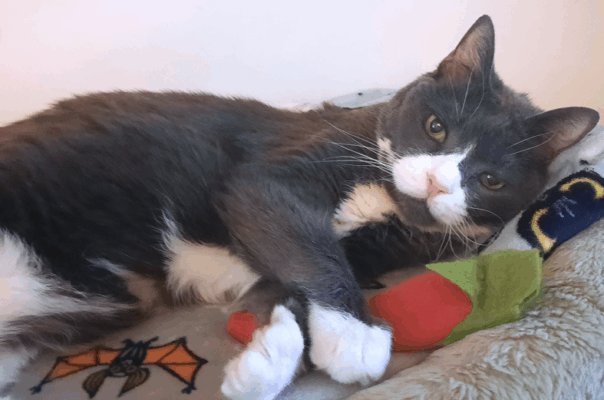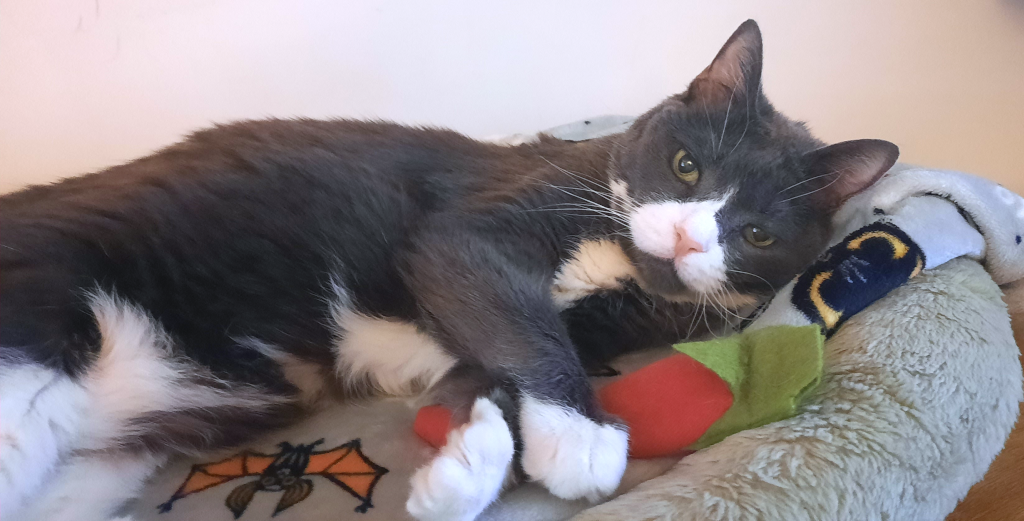As pets age, their bodies undergo changes similar to those in aging humans. Their metabolism slows, immune function declines, and organs may begin to show wear after years of faithful service. Arthritis may creep in and just general mobility may become an issue because of general pain.
Understanding Senior Pet Health Challenges
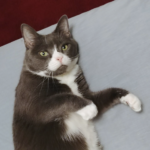 For cats, conditions like hyperthyroidism and kidney disease become increasingly common after age 10-12. The thyroid gland, which regulates metabolism, can develop benign growths that overproduce thyroid hormones. This causes weight loss despite increased appetite, hyperactivity, and potential cardiac complications if left untreated.
For cats, conditions like hyperthyroidism and kidney disease become increasingly common after age 10-12. The thyroid gland, which regulates metabolism, can develop benign growths that overproduce thyroid hormones. This causes weight loss despite increased appetite, hyperactivity, and potential cardiac complications if left untreated.
Kidney disease in senior cats often develops as nephrons (the kidney’s filtering units) deteriorate over time. Years of processing toxins, occasional dehydration, and genetic factors contribute to this gradual decline. By the time symptoms appear—increased thirst, urination, and eventually decreased appetite—significant kidney function may already be compromised.
For senior dogs, arthritis affects approximately 80% of those over age 8, with larger breeds often showing symptoms earlier. The lifetime of impact on joints, combined with age-related decreases in cartilage cushioning and natural lubricants, leads to inflammation and pain. Other common canine senior ailments include heart disease, dental problems, cognitive dysfunction (canine dementia), and various cancers—all requiring medication regimens that present administration challenges.
The Medication Challenge
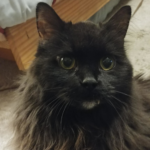
The need for regular medication creates a dilemma for pet owners: how to consistently administer pills to animals who may resist. This challenge becomes particularly pronounced when:
- Medications must be given on an empty stomach
- Pills have a bitter taste that permeates through food
- The pet has developed wariness after previous medication attempts
- Multiple medications must be given at different times
- The medication schedule is long-term or permanent
Pet resistance isn’t stubbornness—it’s self-preservation. From their perspective, the unusual taste or forced administration feels threatening. Additionally, senior pets may have diminished senses of smell and taste, making them more selective about what they consume.
Medication Administration Techniques
Food-Based Methods
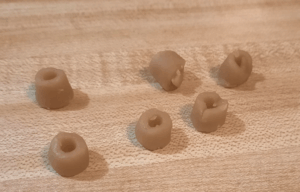 Pill Pockets: These commercially produced treats have a hollow center designed to conceal medication. They come in flavors appealing to pets—chicken, salmon, or peanut butter. The soft texture allows you to mold it around the pill, completely hiding it from view. The advantage is simplicity—just insert, pinch closed, and offer. However, some pets eventually learn to eat around the medication or may reject the pocket entirely after detecting medication inside.
Pill Pockets: These commercially produced treats have a hollow center designed to conceal medication. They come in flavors appealing to pets—chicken, salmon, or peanut butter. The soft texture allows you to mold it around the pill, completely hiding it from view. The advantage is simplicity—just insert, pinch closed, and offer. However, some pets eventually learn to eat around the medication or may reject the pocket entirely after detecting medication inside.
Our cat Belle elevated pill avoidance to an art form. She would casually “spit” out pills after seemingly consuming her food or pill pocket. When we caught on and started watching her, Belle developed a new strategy: concealing the pill in her mouth until we walked away. This led us to implementing post-medication mouth checks, which she promptly countered by learning to hide pills even during our inspections. Her message was unmistakable—she absolutely refused to take medications. Period.
Food Disguise: Using small amounts of highly palatable foods can work well. For dogs, options include:
- Small pieces of hot dog or sausage
- Soft cheese (provided it doesn’t interfere with medication)
- Peanut butter (xylitol-free) formed into a pill-hiding ball
- Canned food formed into a small meatball with the pill inside
For cats, options include:
- Cream cheese or other soft cheese
- Pieces of tuna or other aromatic fish
- Commercial cat treats with soft centers that can be opened
The key to success with food disguises is using minimal amounts to ensure consumption and choosing foods with strong flavors that mask medication. Another technique is the “triple decker” approach—offering a treat without medication, immediately followed by the treat containing medication, then another plain treat. This builds momentum and trust, increasing the likelihood of consuming the medicated middle portion.
Food Limitations: While food-based methods are preferred for reducing stress, they aren’t always viable:
- Some medications must be given on an empty stomach for proper absorption
- Certain pills react poorly with specific foods (e.g., some antibiotics with dairy)
- Medical conditions may restrict dietary options
- Pets with diminished appetite may not consume enough to take the medication
Direct Administration Methods
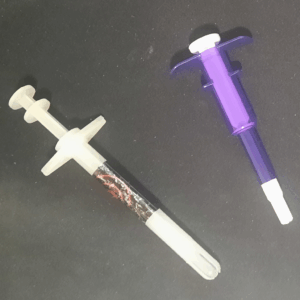 When food disguise isn’t an option, direct administration becomes necessary. While potentially more stressful, using proper technique minimizes discomfort for both pet and owner.
When food disguise isn’t an option, direct administration becomes necessary. While potentially more stressful, using proper technique minimizes discomfort for both pet and owner.
Pill Guns/Pill Poppers: These plastic devices hold the pill at one end and have a plunger that deposits the medication toward the back of the throat. Benefits include:
- Keeping fingers away from teeth
- More precise placement at the back of the throat
- Quicker administration, reducing stress duration
- Less pill handling, which can leave bitter residue or scent
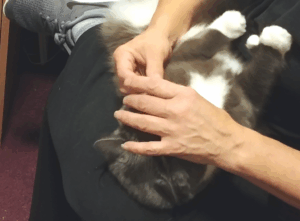 Manual Administration: This traditional method requires:
Manual Administration: This traditional method requires:
- Position your pet securely—smaller pets can sit on your lap, while larger dogs may need to sit against a wall or corner to prevent backing away
- For cats and small dogs, approach from behind or the side and gently tilt the head upward
- Use your non-dominant hand to hold the jaw, applying gentle pressure at the jaw hinge to encourage opening
- With larger dogs, place your hand over the muzzle, insert your thumb and middle finger behind the canine teeth, and gently press the lips against the teeth while lifting upward
- Once the mouth opens, use your dominant hand to quickly place the pill as far back on the tongue as possible
- Immediately close the mouth, holding it gently shut
- Stroke the throat or blow gently on the nose to encourage swallowing
- Follow with a small amount of water using a syringe (without needle) to help the pill move down the esophagus
Watching for Success: After administration, monitor your pet for a few minutes. Some clever pets will pretend to swallow, only to spit out the medication when you’re not looking. Check around their eating area and bedding to ensure the pill wasn’t rejected.
Compounding and Alternative Forms
When oral medications cause adverse reactions, veterinarians may recommend transdermal delivery systems. This approach became essential for our cat Tuffy, who developed serious complications from traditional pill administration for his hyperthyroidism.
Tuffy’s story illustrates a common challenge with senior pets: his body couldn’t tolerate the oral medication, triggering episodes of vomiting that expelled both the medication and food. This created a dangerous cycle – he wasn’t getting his required medication while simultaneously losing precious weight and nutrients with each episode.
When traditional pills consistently fail, explore these options with your veterinarian:
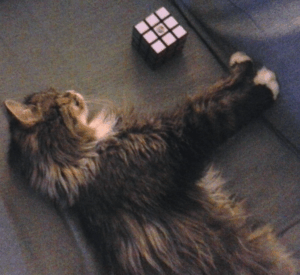 Compounded Medications: Many medications can be reformulated by specialty pharmacies into:
Compounded Medications: Many medications can be reformulated by specialty pharmacies into:
- Flavored liquid suspensions
- Transdermal gels applied to hairless areas like ear tips (as we had to do with our cat Tuffy)
- Flavored chewable treats with precise medication doses
- Tiny dissolving tablets that work quickly
Alternative Delivery Systems: Depending on the condition, some medications come in:
- Long-acting injections administered at the vet’s office
- Once-monthly topical applications
- Extended-release tablets requiring less frequent dosing
Managing Multiple Medications: The Capsule Solution
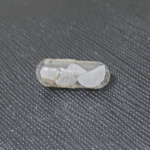 When senior pets require multiple medications, pill administration can become a time-consuming challenge. For cats like Belle and Paws who needed several different medications daily, combining these medications into a single dose can significantly reduce stress for both pet and owner.
When senior pets require multiple medications, pill administration can become a time-consuming challenge. For cats like Belle and Paws who needed several different medications daily, combining these medications into a single dose can significantly reduce stress for both pet and owner.
Empty capsules provide an elegant solution for consolidating multiple pills. These gelatin or vegetable-based shells can hold several small pills or pill fragments, turning a four-pill ordeal into a single administration. This method is particularly valuable for:
- Pets requiring multiple medications at the same time of day
- Animals who become increasingly resistant with each additional pill
- Owners with mobility issues who find multiple pill administrations physically challenging
- Creating a predictable, less frequent medication routine
Where to Find Empty Capsules
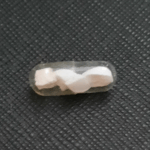 Empty capsules can be sourced from various reliable outlets:
Empty capsules can be sourced from various reliable outlets:
- Local pharmacies (many will provide a small quantity upon request)
- Online retailers like Amazon or specialized pharmacy supply websites
- Health food stores that sell supplements
- Veterinary offices (some may provide them for clients with multi-medication pets)
- Medical supply companies
When purchasing, look for pharmaceutical-grade capsules in appropriate sizes—typically size 3 or 4 for cats, and size 2 or 3 for small to medium dogs. Larger dogs may require size 0 or 1 capsules.
Preparation Tips
When combining medications in capsules:
- Verify with your veterinarian that all medications can be safely combined
- Work on a clean, dry surface to prevent contamination
- Use pill splitters for accurate divisions rather than breaking by hand
- Carefully fill the larger half of the capsule before joining with the smaller cap
- Prepare only what you’ll use within a short timeframe unless advised otherwise by your veterinarian
- Label containers clearly if preparing multiple capsules in advance
Important Considerations
While convenient, this method isn’t appropriate for all medication combinations:
- Some medications may interact when in direct contact
- Time-release formulations shouldn’t be crushed or combined
- Medications with different administration requirements (with/without food) can’t be combined
- Enteric-coated pills that must reach the intestines intact shouldn’t be placed in capsules
Always consult with your veterinarian before combining any medications to ensure safety and continued effectiveness of each treatment.
This capsule method transformed our medication routine with Belle and Paws, reducing administration time and increasing success rates. The approach preserved their dignity by minimizing handling and stress while ensuring they received their complete treatment regimen.
Building Positive Associations
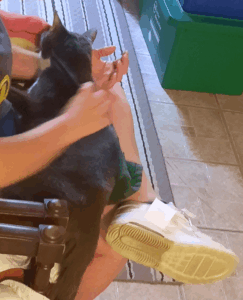 It’s important to keep your pet calm and stress free during any medication process or procedure while maintaining a positive environment for them. Regardless of method chosen, creating positive associations with medication time helps reduce stress:
It’s important to keep your pet calm and stress free during any medication process or procedure while maintaining a positive environment for them. Regardless of method chosen, creating positive associations with medication time helps reduce stress:
- Maintain a calm demeanor—pets sense frustration and anxiety
- Schedule medication at consistent times to establish routine
- Offer praise, affection, or a small treat after successful administration
- Consider clicker training to mark and reward cooperative behavior
- For manual administration, periodically practice handling your pet’s mouth without medication to normalize the experience
When to Seek Help
If medication administration becomes chronically difficult:
- Consult your veterinarian about alternative formulations
- Ask for a demonstration of proper technique
- Consider whether medication timing could be adjusted
- Discuss whether a medication is truly necessary or if alternatives exist
- For critical medications, ask about options for veterinary administration
Respecting Your Pet’s Dignity
As our companions age, they deserve compassionate care that respects their dignity. This means:
- Choosing the least stressful effective method
- Being patient and gentle during administration
- Recognizing when a method isn’t working and adapting
- Considering quality of life in medication decisions
- Celebrating small victories when medication is successfully administered
With patience, creativity, and knowledge of proper techniques, medication administration can become a manageable part of senior pet care rather than a daily battle. The goal isn’t just compliance but creating a system that maintains trust and comfort for your beloved senior companion.


